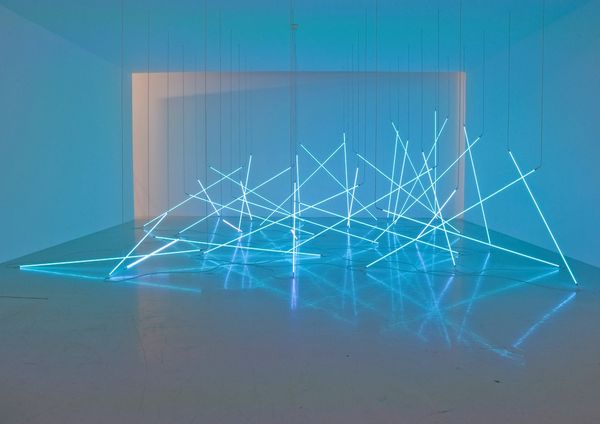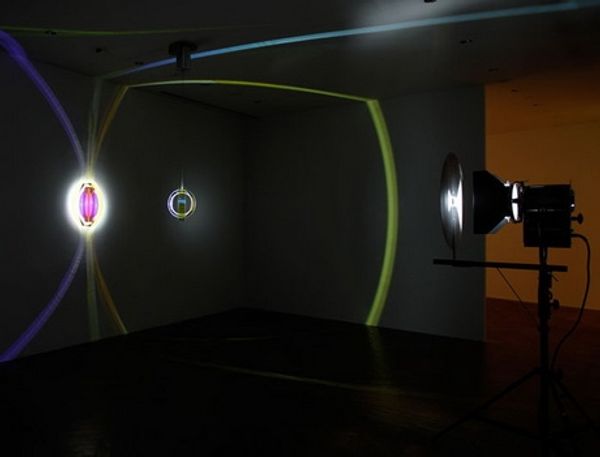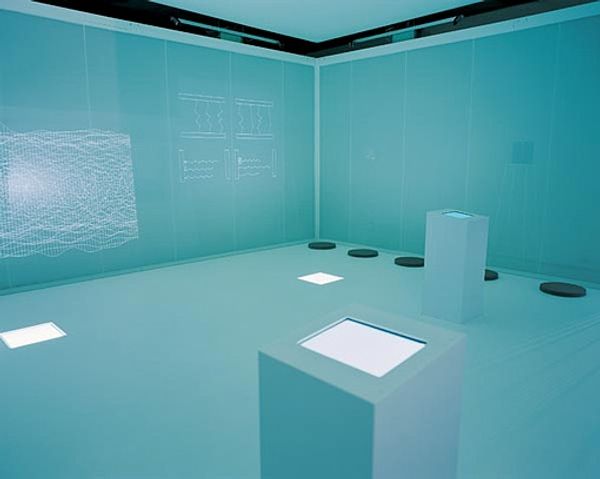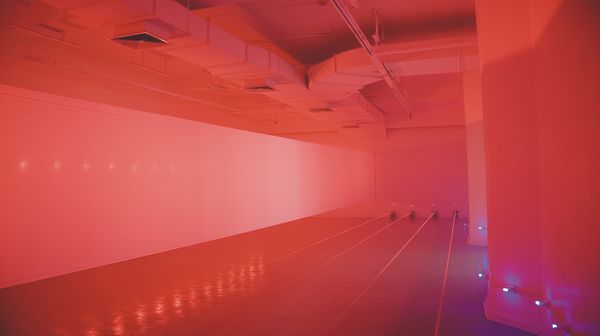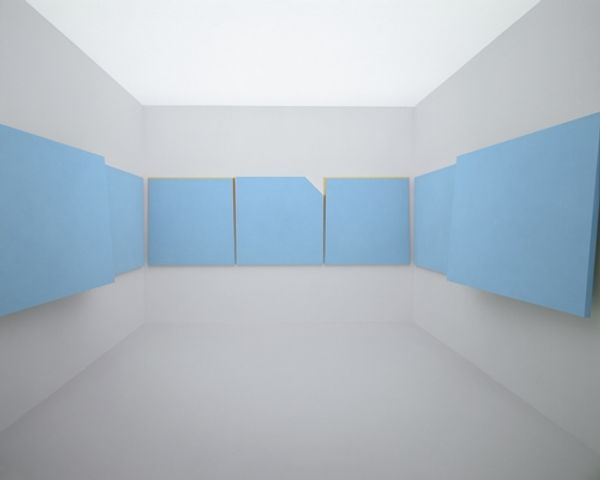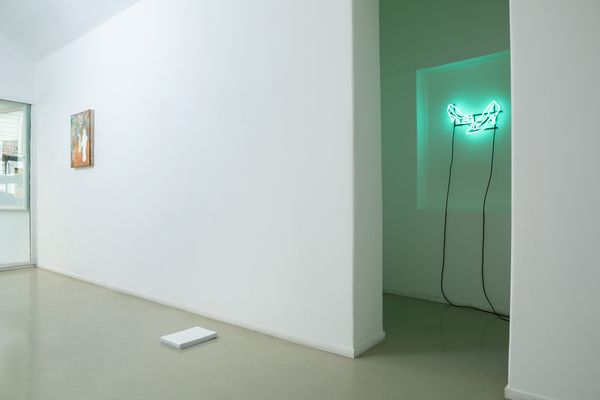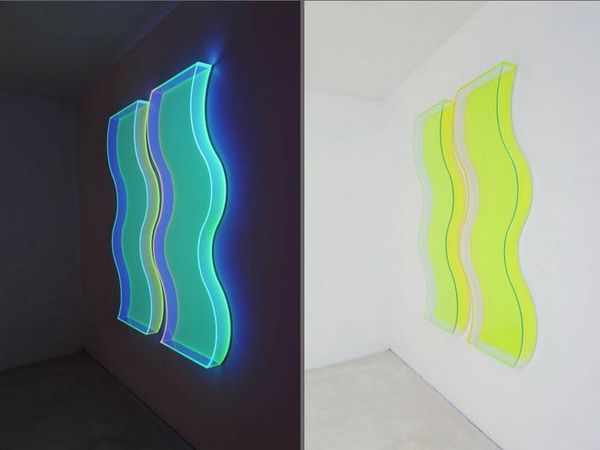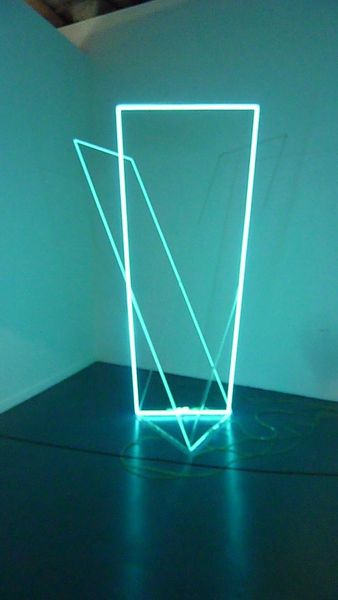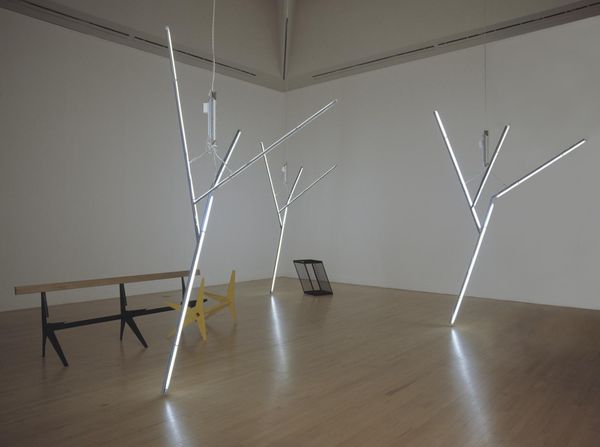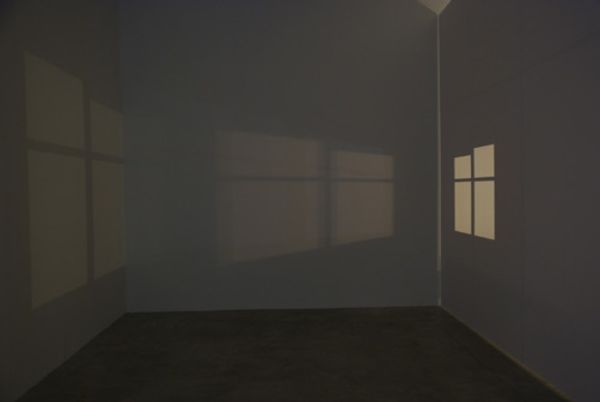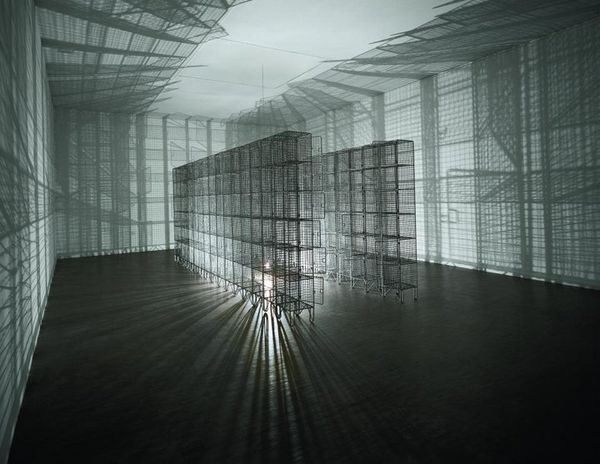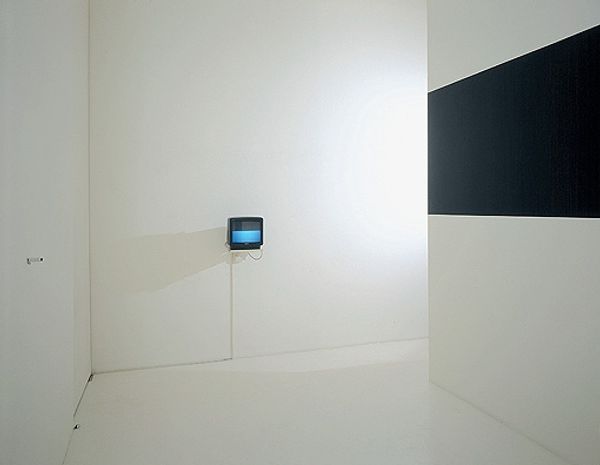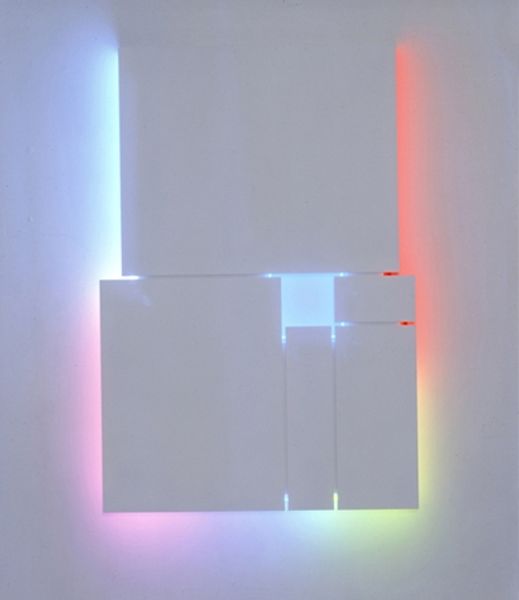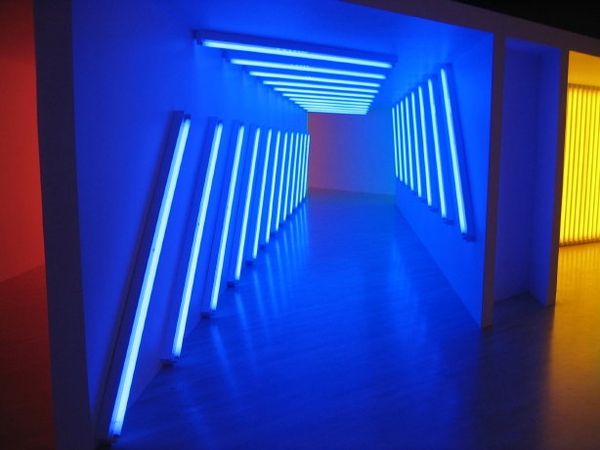
installation-art
#
light-and-space
#
conceptual-art
#
minimalism
#
geometric
#
installation-art
#
line
#
digital-art
Copyright: Francois Morellet,Fair Use
Curator: Upon entering this space, one is immediately struck by the artist's playful manipulation of form. We’re looking at François Morellet’s “No End Neon,” an installation piece from 1990 that truly encapsulates the spirit of minimalist conceptualism. Editor: My first impression is of a kind of electric field, contained within the gallery walls. The vibrant blue glow, almost clinical in its intensity, is quite mesmerizing. It really plays with your perception of depth and space. Curator: Precisely! Morellet, deeply invested in systems and chance, arranges these neon tubes seemingly at random, challenging traditional notions of composition and artistic intention. How might this embrace of randomness speak to broader shifts in cultural production and meaning making? Editor: Well, by the 90s, institutions had definitely begun grappling with postmodern theory. The autonomy of the artist, the nature of the art object itself—everything was up for grabs. The use of neon is also significant, aligning it with advertising and consumer culture while ironically subverting those associations through pure abstraction. It's really interesting that Morellet does it, since the dematerialization of art can be read as resistance to commodity culture as such. Curator: Absolutely. Morellet was also engaging with Light and Space movements in art at that moment. It wasn’t about the neon as object, but how light fundamentally altered one’s understanding of the space itself. How it disrupts or shifts our preconceived notions of form. Editor: Looking closer, the neon lines seem to intersect at random, breaking the geometry of the space. It reminds me of similar installations in factories of the era, neon everywhere as an expression of hyper-industrialisation. Curator: The institutional critique is spot on: I would like to emphasise that its lack of closure offers a powerful commentary on systems and their inherent instability, their inherent reliance on external structures to sustain the logic that upholds them. Editor: It really makes you consider the gallery as another system—a framework determining how we perceive art. It almost seems to say that there's no autonomy within these institutions either. Curator: In this context, "No End Neon" acts as both a captivating aesthetic experience and a thought-provoking reflection on the very nature of art, challenging our preconceived notions about space, perception, and the power structures inherent in the art world. Editor: And on how we engage with meaning and with our spaces. An intriguing piece to discuss well beyond the confines of the gallery, I think.
Comments
No comments
Be the first to comment and join the conversation on the ultimate creative platform.
